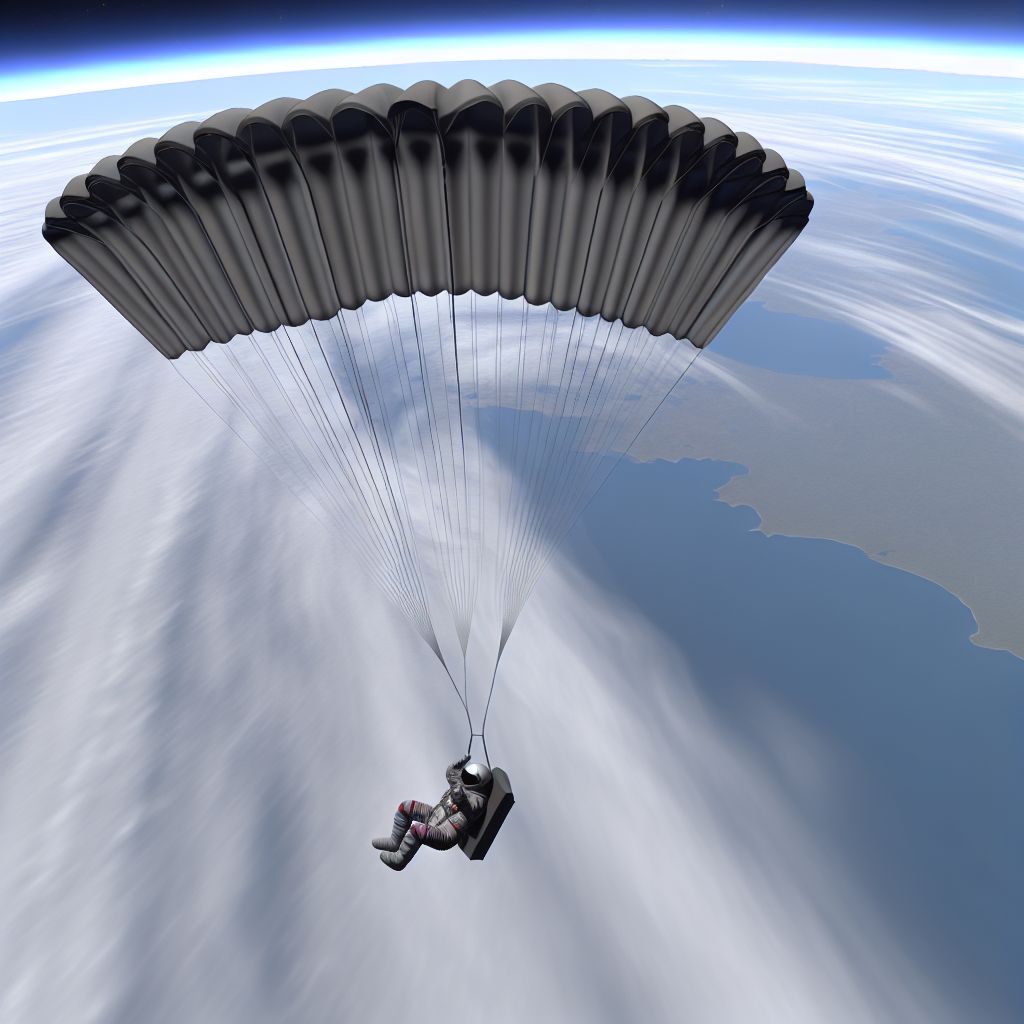Deutsch: Fallschirm / Español: Paracaídas / Português: Pára-quedas / Français: Parachute / Italiano: Paracadute /
In the Space industry context, a parachute is a device used to slow the descent of a spacecraft, Satellite, or other objects as they re-enter the Earth's Atmosphere or land on other Celestial bodies. Parachutes are Critical for ensuring the safe return of crewed space capsules, the gentle landing of robotic explorers on planets or moons, and the recovery of certain rocket components. They are designed to deploy at specific altitudes and speeds to reduce velocity, allowing for a controlled and safe landing.
Description

Space parachutes are highly engineered systems that must withstand extreme conditions, including high temperatures during atmospheric re-entry, significant aerodynamic forces, and the Vacuum of space. They come in various designs and sizes, tailored to specific mission requirements. Some spacecraft use a series of parachutes, including drogue chutes for initial deceleration and main parachutes for the final descent phase. Materials used in space parachutes must be Lightweight yet durable, often including high-strength fabrics like Nylon or Kevlar.
Application Areas
- Crewed Spacecraft Recovery: Ensuring astronauts return safely to Earth by slowing down the spacecraft during re-entry and landing.
- Sample Return Missions: Delivering samples collected from other planets, moons, or asteroids back to Earth without damaging the contents.
- Mars Rovers and Landers: Enabling spacecraft to land gently on the surface of Mars or other celestial bodies for Exploration missions.
- Rocket Stage Recovery: Some reusable rocket components, like those used by SpaceX's Falcon 9, employ parachutes to slow their descent for recovery and reuse.
Risks
- Parachute Failure: Malfunction or failure to deploy can lead to mission failure and the loss of spacecraft or cargo.
- Atmospheric Variability: Changes in atmospheric conditions can affect parachute Performance and the Accuracy of landing.
- Re-entry Damage: The parachute system must survive the intense Heat and forces of re-entry before deployment.
Examples
- Apollo Missions: Utilized a three-parachute system to safely return astronauts from the moon.
- Mars Science Laboratory (Curiosity Rover): Employed a supersonic parachute to slow its descent onto Mars' surface.
- SpaceX Dragon Capsules: Use parachutes for Ocean landings upon returning from the International Space Station.
Similar Terms or Synonyms
- Deceleration Device
- Aerodynamic Brake
Summary
Parachutes in the space industry are essential for the safe return of spacecraft and their occupants or payloads from space to Earth or for landing on other celestial bodies. They are a key Technology enabling the recovery and reuse of space Hardware, reducing the cost of Access to space, and ensuring the success of critical mission phases involving entry, descent, and landing.
--
Related Articles to the term 'Parachute' | |
| 'Space' | ■■■■■■■■■ |
| Space: Everything beyond Earth\'s atmosphere is called space (outer space). . . . . . . Read More | |
| 'Gravitation' | ■■■■■■■■■ |
| Gravitation: In the aerospace context, gravitation refers to the force of Attraction between two objects . . . Read More | |
| 'Orbit' | ■■■■■■■■ |
| Orbit: An orbit is the path that an object follows as it travels around another object under the influence . . . Read More | |
| 'VTOL' | ■■■■■■■ |
| VTOL in the Space industry context stands for Vertical Take-off and Landing. It refers to the capability . . . Read More | |
| 'Velocity' | ■■■■■■■ |
| In the aerospace context, velocity refers to the speed and direction of an object as it moves through . . . Read More | |
| 'In-situ' | ■■■■■■■ |
| In the Space industry context, in-situ refers to the observation, analysis, or utilization of materials . . . Read More | |
| 'Orbital Insertion' | ■■■■■■■ |
| Orbital Insertion: Orbital insertion refers to the precise maneuver in which a spacecraft transitions . . . Read More | |
| 'Celestia' | ■■■■■■ |
| Celestia is a free, open-source, space simulation software that allows users to explore the universe . . . Read More | |
| 'Magnetosphere' | ■■■■■■ |
| Magnetosphere: In astronomy and planetary science, a magnetosphere is a region of space surrounding an . . . Read More | |
| 'Buoyancy' | ■■■■■■ |
| Buoyancy: In the Space industry context, buoyancy is not commonly discussed in the traditional sense . . . Read More | |
